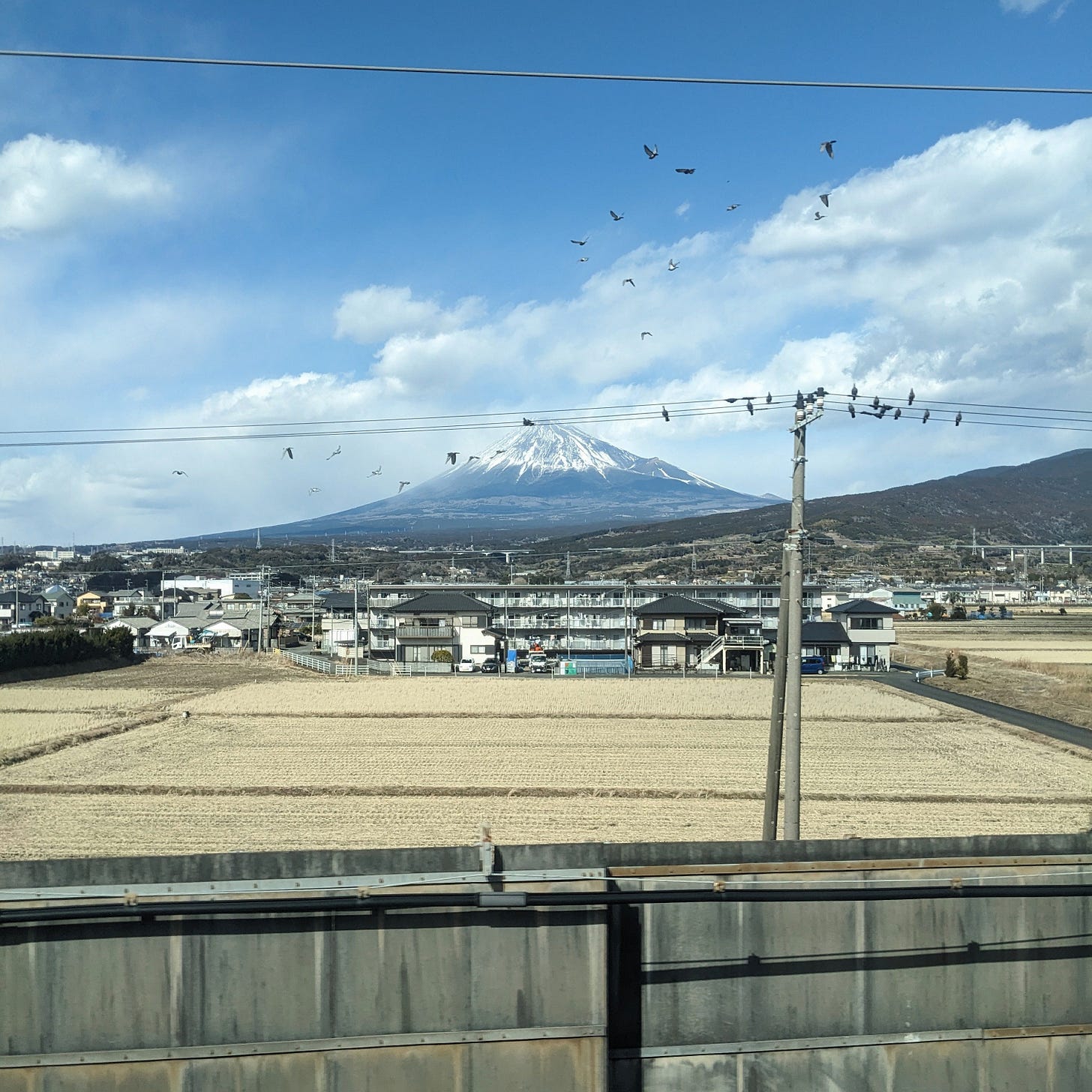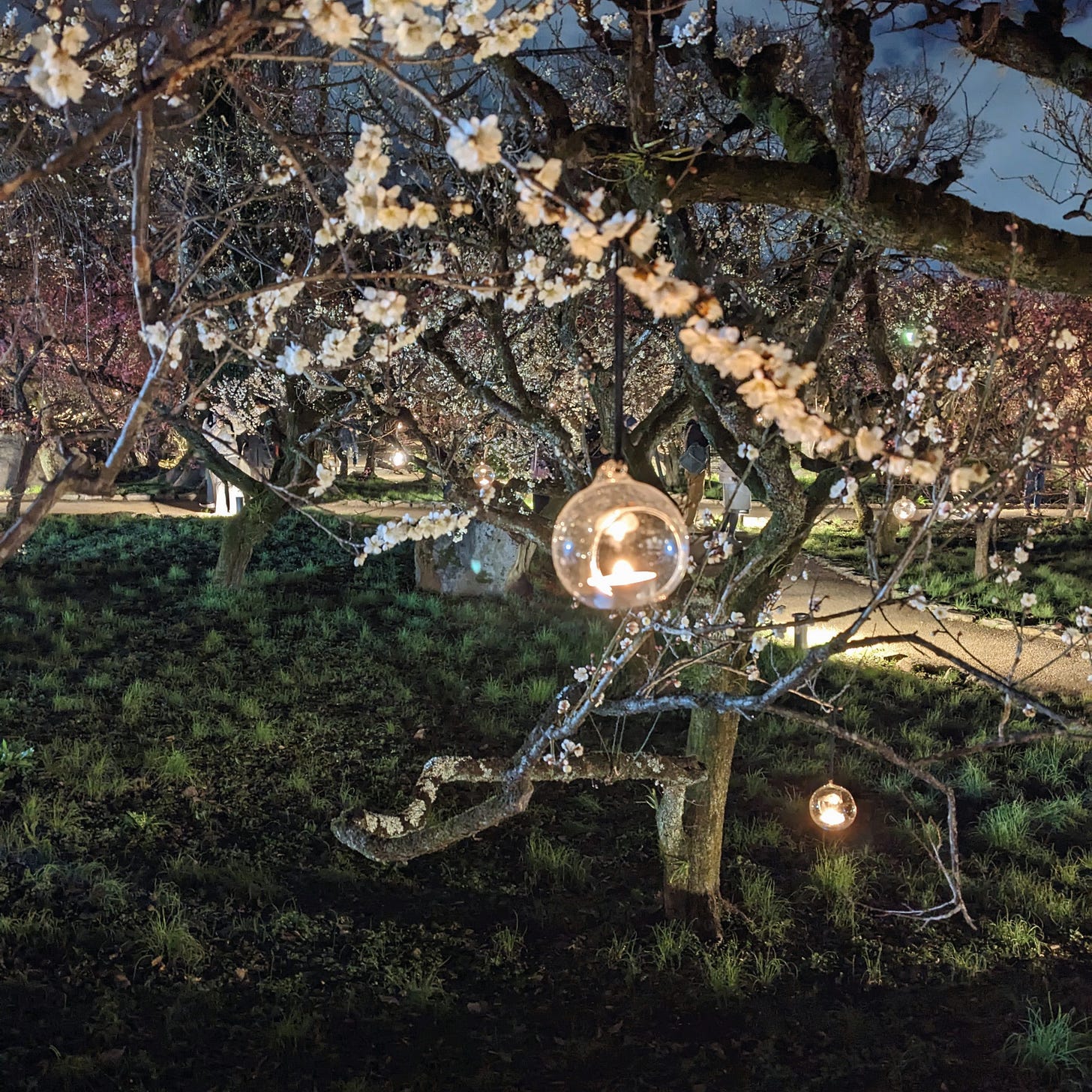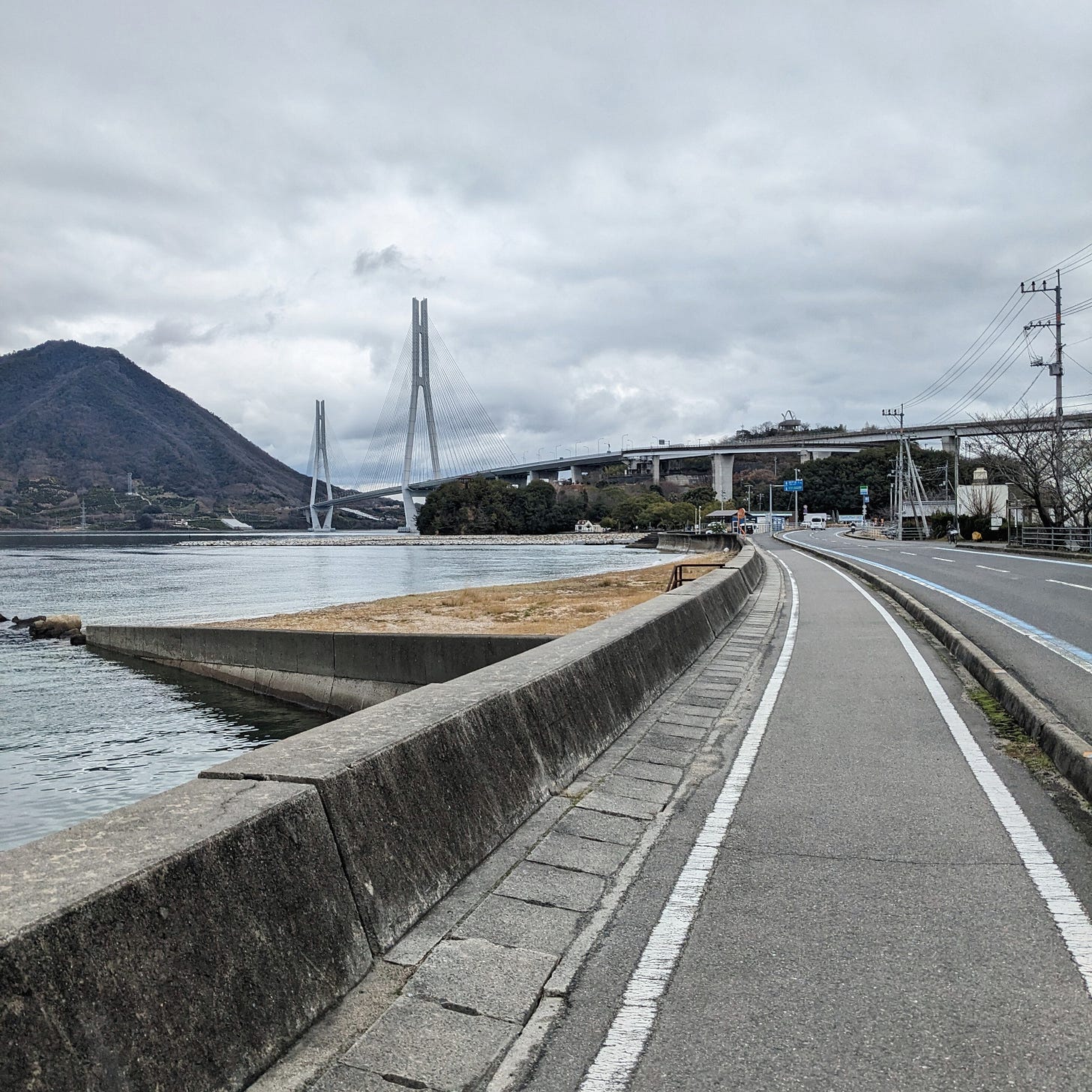My wife and I spent a month traveling in Japan during February and March.
The country was once my home. Over two decades ago, when I was eight, my family lived in Mitaka, a quiet residential district of Tokyo. Returning as an adult was a deeply emotional experience.
Quick disclaimer: I’m skeptical of most travel writing. It takes years, not weeks, to get to know a place. When people offer profound insights after a brief visit, I think they're either confirming their pre-existing beliefs or extrapolating too much from limited experience. Despite having lived in Germany for three years—learning the language and building friendships—I wouldn’t claim to understand the “German character.” A month in Japan only scratches the surface.
Nevertheless, we were fortunate to spend a relatively long time exploring various parts of the country. Here are my key impressions:
Japan has changed significantly since I lived there. Two decades ago, I don’t think there were half as many foreign tourists. Now, whether due to TikTok or the inexpensive yen, Kyoto is as teeming with tourists as Amsterdam or Paris. I longed to step back into the Japan of my childhood. Alas, that Japan, just like my childhood, is no longer there.
The highlight of our trip was walking the Nakahechi trail of Kumano Kodo. We trekked with a Japanese friend, covering around 90 kilometers over five days. The nature is magnificent. The accommodations were superb, too. Our hosts were incredibly welcoming, the food delicious, and a hot bath always ready. Despite the February off-season, we met other hikers along the way. Crossing paths with the same people over several days created a lovely sense of camaraderie.
It’s quite evident that Japan is old and getting older. In more rural areas, you notice closed shops and schools that are no longer operating. I was surprised to see senior citizens, many seemingly in their seventies, still working in various jobs.
More people speak English than I expected. Not everyone, but then Google Translate or DeepL works well enough for basic communication. Before departing, my wife and I took around ten Japanese lessons. These weren’t enough to have meaningful conversations, but they did help. The favorite word I learned during the visit is “nekojita.” The word—literally, “cat’s tongue”—is used to describe someone who can’t eat very hot (temperature-wise) food.
eSIMs are awesome. No need to hunt for an overpriced physical SIM at the airport anymore. Google Maps works exceptionally well in Japan, too, especially in Tokyo.
We traveled during Japanese winter and early spring. It can get pretty cold, especially indoors, as many older houses are not well-insulated. The upside, though, is that we were lucky to see a variety of weather. We saw huge piles of snow in Nagano. We watched plum trees blossom in Kyoto. We experienced crisp early mornings hiking on the Kumano Kodo.
All cities felt extremely safe, more so than probably any place I’ve been to in Europe or the US. It was great to wander around without having to worry about whether you’re in a sketchy neighborhood or if public transit is safe. I didn’t notice any open drug use and only saw a handful of homeless folks. This was a major contrast to our last big trip to the Pacific Northwest when we visited Seattle, Portland, and Vancouver.
There’s a famous quote, attributed to Marcel Proust, that “The real voyage of discovery consists not in seeking new landscapes, but in having new eyes.” I’ve learned a number of things about myself that I somewhat knew, but which the experience of long travel made obvious. I love traveling, but I’m also more of a creature of habit than I’d like to admit. For example, it’s essential for me to exercise regularly. While we were active on our journey, the lack of a regular sports routine made me more antsy than usual.
Kevin Kelly wrote that a key criterion for selecting travel companions is whether they complain or not. According to this metric, I’m not a good travel buddy. I’m well-structured and methodical, something that’s helpful when planning a holiday. The downside is that I’m not always easy-going when things don’t go according to plan. My wife is much better than me at this; I hope to learn more from her.
Winter travel comes with trade-offs. Perhaps we were overambitious with our itinerary, or maybe we just got unlucky, but we got sick twice on our month-long visit. On the other hand, traveling off-season meant fewer crowds and greater quiet.
Japanese convenience stores live up to their reputation. Konbinis provided us with breakfast, lunch, and dinner. We bought detergent for laundromats, used the ATM when we ran out of cash, and grabbed ice cream for a late-night snack. I wish something like this existed in Europe. Yet I wonder whether the key things that make konbinis awesome—affordable high-quality food, cleanliness, impeccable service—are so intrinsically Japanese that they are hard to replicate elsewhere.
Public restrooms are the best I’ve seen. Not just the cleanliness but also their density is unmatched. The killer feature of Japanese toilets to me is heated seats—something you really appreciate when you have stomach problems in a chilly ski lodge (according to, uhm, a friend).
Public transport is wildly good. In our month in Japan, we only experienced a single delay (due to a tree falling over a railway track on the Kuroshio line). Yet there is also an element of organized chaos. For example, in Tokyo, three major companies provide train and metro services, and you can’t buy a single paper ticket for a trip that involves multiple providers. If you buy a JR West railway pass, it won’t cover all railways in that region. Every train station has different types of ticket machines, and it’s not always immediately clear which one you need. Minor inconveniences, of course, and easily overcome.
The people were exceptionally considerate. Taking a subway in central Tokyo during rush hour felt more relaxed than public transit in Europe during off-hours—no one spoke loudly on the phone, listened to music without headphones, or bumped into you. When a local friend mentioned leaving his iPhone on the subway, I expressed relief that someone had found it. He just shrugged it off with “Oh, people here always return lost things.” In another instance, we wanted to try amazake, a fermented rice drink recommended by our Japanese teacher. Unable to identify it among the many similar kanji-labeled products, we approached a shop worker. The lady kindly showed us amazake in the refrigerated section. We thanked her and continued shopping. Then, minutes later, she returned with several other amazake packages in her hands, explaining there were more options in a different part of the store—although she’d already helped us!
I got the feeling that there are often more people doing a task than is strictly necessary. Even for small road construction works, you’ll see one or more people just directing the traffic. At train stations, multiple staff members assist travelers with tasks that might be automated elsewhere. That’s maybe not great for productivity, but it adds a human touch to many daily experiences.
Looking back, the experiences that stand out most are things we did and conversations we had, not the things we saw or ate. (The food was amazing, of course.) I remember playing tag with the children of our hosts in Hiroshima. I remember feeling the wind while cycling over the glorious bridges of Shimanami Kaido. I remember that in Japan, whistling at home is believed to call snakes into your house. These experiences are the most valuable, but also the hardest to plan.
Thank you, Japan, for having us. I wonder how you’ll look two decades from now.






